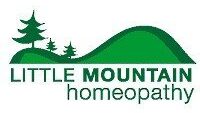
Yes, there are many studies that prove the effectiveness of homeopathy, as well as its safety and cost-effectiveness. Studies also show that homeopathic treatment is often effective after orthodox treatment has failed. General studies proving the effectiveness of homeopathy are listed below. Studies on homeopathy’s effectiveness for specific health conditions can be found on their specific corresponding pages (see specific health conditions listed on the top of the website, health conditions are listed from A to Z).
I recommend the following websites for those who are curious about the latest homeopathy research:
Homeopathy Research Institute
AIH Guide to Homeopathic Research
Indian Journal of Research in Homeopathy
Research Examples
This was an effectiveness and safety study on homeopathy carried out for the Swiss Federal Office for Public Health. Using Internet-based resources, manual search and contact with experts, and assessed according to internal and external validity criteria, investigators found that the trend was in favour of a therapeutic benefit from homeopathic intervention. In addition, it was stated by the authors of the study that, “…effectiveness of homeopathy can be supported by clinical evidence and professional and adequate application be regarded as safe. “
Carried out in 9 homeopathic clinics in the Los Angeles area, this study was done to determine the success or otherwise of constitutional homeopathic practice as assessed by the people who’d undergone this therapy. The study also looked at the characteristics of the people involved in the study. Information was provided by 77 clients. At 4 months after treatment, 71% of clients reported improvement in their health status. This is contrasted with the fact that 80% of all clients enrolled in this survey had had previous orthodox medical treatment for their condition which they had found unsuccessful. The most common presenting complaints involved the respiratory, gastrointestinal and female reproductive systems and most clients were highly educated but had little knowledge of homeopathy prior to their treatment with it.
5000 people were treated for various ailments using acupuncture, and 900 people were treated using individualised homeopathy, by medical practitioners in a number of clinics throughout Germany. Most of these people had previously been treated using conventional drugs. After treatment, of those being treated using acupuncture, 36% stated that they felt “very much better” and 49% felt, “somewhat better”. Of those being treated using homeopathy, 39% stated that they felt “very much better” and 38% felt, “somewhat better”.
1000 questionnaires were sent to 8 UK pharmacies, requesting them to pass the questionnaires to customers. These, questionnaires asked the customers whether or not they found OTC homoeopathic medicines effective for the conditions for which they were purchased. A total of 257 users responded, and the accumulated results showed that 83% of respondents felt better after taking the product.
This was a study carried out by the Swiss Federal Office of Public Health designed to determine levels of patient satisfaction and the perception of side effects following the use of homeopathic medicine. It was part of a national program designed to evaluate complementary and alternative medicine use in Switzerland. The bulk of the data used in the study came from questionnaires filled in over a specific 4 day period supplied by physicians using conventional medicine, physicians using homeopathic medicine, and from patients who’d filled in questionnaires mailed to them 1 month after treatment. 170 practitioners were involved in the study. A total of 3126 questionnaires were received by the researchers and analysis of these revealed the following. 21% of those treated with homeopathy reported “complete resolution” of the presenting complaint versus 28% of those on conventional therapy and 53% reported “complete satisfaction” with homeopathic treatment versus 40% of those given conventional therapy. The rate of side effects reported by those using homeopathy was less than those given conventional medicine.
In this study, carried out by 30 investigators, at 6 clinics in 4 countries, 456 patients suffering from upper respiratory allergies, lower respiratory allergies or ear disorders were assigned to one of two groups- those prescribed homeopathic medicines (group A) or those prescribed standard medical treatment (Group B). The outcome measure was the response to treatment after 14 days, as well as the speed of recovery, rate of side effects, level of general satisfaction and length of consultation. The response to treatment within 14 days was 82.6% in Group A and 68% in Group B. For recovery speed, 67% of Group A recovered within 3 days and 57% of Group A recovered at this speed. The side effect rate for Group A was 8% compared to 22% for Group B. Those claiming to be very satisfied with their respective treatments were 79% of Group A and 65% of Group B. The majority (60%) of both groups received consultations that lasted for between 5 and 15 minutes.
This study was designed to determine the level of effectiveness of homeopathy as used in a general practice clinic where the standard 10 minute consultation time applies. To do this, 5,331 patient files, taken from one 12 month period in one general practice clinic, were examined and those files that described a consultation where a homeopathic medicine was given were separated out for analysis. This produced a total of 489 consultations that resulted in a homeopathic medicine prescription. Of these, 78% of patients had a positive response to their treatment with homeopathy, 19% had no response, and 3% had a negative response.
In this study, consecutive patient files in a single homeopathic clinic were examined to determine the success or otherwise of this form of treatment. Of the 829 patients surveyed, 61% had a sustained improvement from their constitutional homeopathic treatment.
This study examined the effect of individualised homeopathic treatment of 455 consecutive patients in a homeopathic medical clinic who’d previously had unsuccessful orthodox medical treatment or were considered to be unsuitable for orthodox medical treatment. Of these, 67% derived benefit from homeopathic therapy, and 33% were able to stop or maintain a substantial reduction in their pharmaceutical drug therapy.
This study looked at the effectiveness of individualised homeopathic therapy over a 6 year period in a UK homeopathic hospital outpatient department. The results from 6544 consecutive patients were examined, and when compared to baseline observations it was found that of these patients, 70% reported an improvement in their conditions.
In this prospective uncontrolled observational multi-centre outcome study, 654 people who’d visited 80 Norwegian homeopaths were asked to assess, via a Visual Analogue Scale (VAS) the effectiveness of this form of treatment comparing the VAS score at their first consultation with the VAS score 6 months later. After the results were collated it was found that 70% of those people visiting a Norwegian homeopath reported a meaningful improvement in their main complaint 6 months after the initial consultation.
782 people suffering from a wide range of diseases who had visited 80 general medical practices in Belgium were treated with individualised homeopathic medicines over an average period of 9 years and 2 months. Most of these people had previously been treated using conventional drugs. The outcomes from this treatment were assessed both by the patients and the practitioners via questionnaires. 13% of the patients assessed in the study expressed satisfaction with previous conventional treatment and 89% of patients expressed satisfaction with their homeopathic treatment.
In this study, 3981 patients being treated in private homeopathic medical clinics in Germany and Switzerland were assessed for the effectiveness of their homeopathic treatment over a 2 year period. When compared to baseline assessments taken immediately before treatment had begun, the adults in the study experienced a reduction in disease severity of 52% and children by 64%.
This cohort study, carried out in Germany, examined the outcomes of homeopathic treatment compared to the orthodox medical treatment of 493 people suffering from a range of chronic illnesses including headache, lower back pain, insomnia, depression, bronchial asthma, atopic dermatitis and allergic rhinitis. The patients’ assessments, taken at 6 months and 12 months from the beginning of the treatment, found that homeopathy provided a greater level of improvement in their illnesses than orthodox medical intervention. This difference appeared to be more pronounced in children than in adults. In regard to the cost of each type of therapy, this study showed these costs to be similar to each other.
German academic and researcher Professor Claudia Witt has been responsible for a number of excellent papers on homeopathy and in this, she and co-workers drew data from 103 Swiss and German homeopathic medicine clinics in an effort to determine the level of change to the health status of patients over periods of 2 and 8 years, as a result of homeopathic intervention, over these times. Data was collected from 3709 patients who were asked to assess the level of change to the severity of their medical complaints and quality of life, at the time of first consultation, at 2 years, and at 8 years from that point. The data from adults and children were assessed separately and the former experienced an average reduction in disease severity from 6.2 at baseline to 2.9 at 2 years to 2.2 at 8 years. For children, a reduction from a baseline disease severity of 6.1 to 2.1 at 2 years was noted and then to 1.7 at 8 years. Physical and mental quality of life scores for both groups increased significantly over the study period and interestingly, researchers found that, within the confines of this study, the younger the patient and the more severe the medical condition, the better the potential for the therapeutic success of homeopathy.

